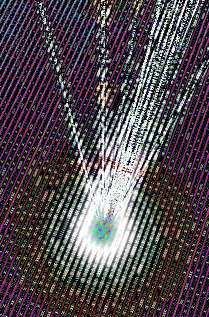Quantum speed boosted
 Australia’s best-known quantum computer expert has built a super-fast version of the central building block of a quantum computer.
Australia’s best-known quantum computer expert has built a super-fast version of the central building block of a quantum computer.
A team of scientists led by 2018 Australian of the Year Professor Michelle Simmons have achieved the first two-qubit gate between atom qubits in silicon – a major milestone on the quest to build an atom-scale quantum computer.
The pivotal piece of research has been published in journal Nature.
A two-qubit gate is the central building block of any quantum computer – and the UNSW team’s version of it is the fastest ever demonstrated in silicon, completing an operation in 0.8 nanoseconds, which is around 200 times faster than other existing spin-based two-qubit gates.
Professor Simmons’ group took an approach in which a two-qubit gate is in operation between two electron spins - comparable to the role that classical logic gates play in conventional electronics.
For the first time, the team was able to build a two-qubit gate by placing two atom qubits closer together than ever before, and then - in real-time - controllably observing and measuring their spin states.
The team’s unique approach to quantum computing requires not only the placement of individual atom qubits in silicon but all the associated circuitry to initialise, control and read-out the qubits at the nanoscale - a concept that requires such exquisite precision it was long thought to be impossible.
But with this major milestone, the team is now positioned to translate their technology into scalable processors.
Professor Simmons, Director of the Centre of Excellence for Quantum Computation and Communication Technology (CQC2T) and founder of Silicon Quantum Computing Pty Ltd., says the past decade of previous results perfectly set the team up to shift the boundaries of what’s thought to be “humanly possible”.
“Atom qubits hold the world record for the longest coherence times of a qubit in silicon with the highest fidelities,” she says.
“Using our unique fabrication technologies, we have already demonstrated the ability to read and initialise single electron spins on atom qubits in silicon with very high accuracy. We’ve also demonstrated that our atomic-scale circuitry has the lowest electrical noise of any system yet devised to connect to a semiconductor qubit.
“Optimising every aspect of the device design with atomic precision has now allowed us to build a really fast, highly accurate two-qubit gate, which is the fundamental building block of a scalable, silicon-based quantum computer.
“We’ve really shown that it is possible to control the world at the atomic scale – and that the benefits of the approach are transformational, including the remarkable speed at which our system operates.”








 Print
Print